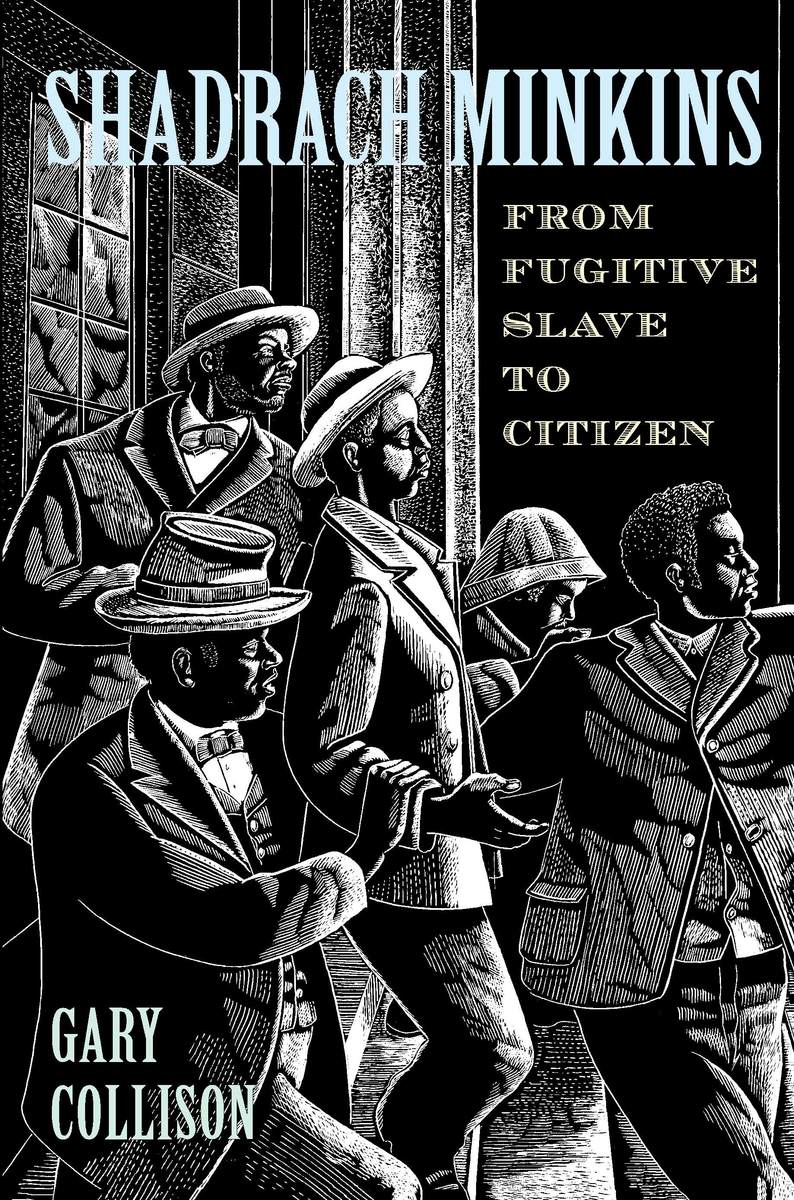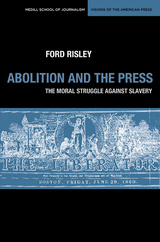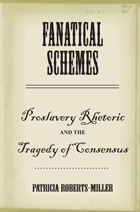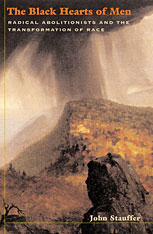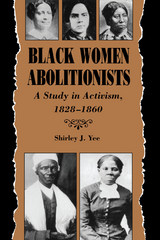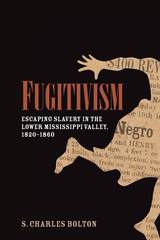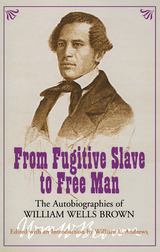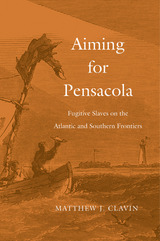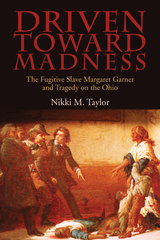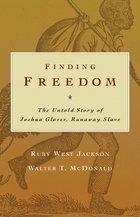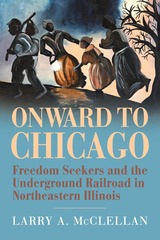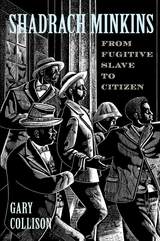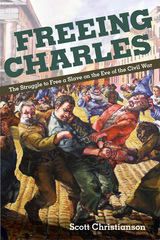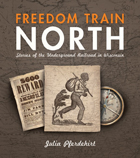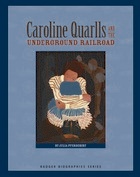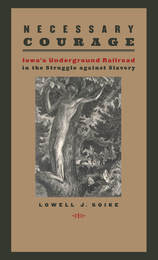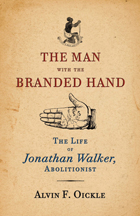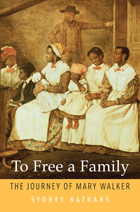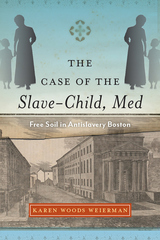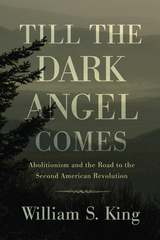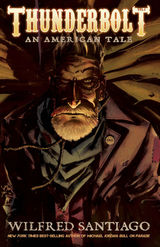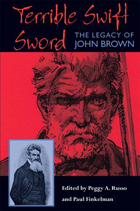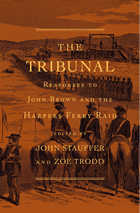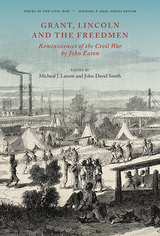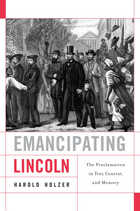Through obsessive sleuthing, the author…has brilliantly brought Minkins back to life. Collison began with little more than the records of the case and contemporary newspaper accounts. He mastered the literature of slavery and the histories of the three cities in which Minkins lived… [A] full-blown biography of an ordinary African American man or woman is a rarity. Only an exceptional author would dare take on such a daunting task, and Shadrach Minkins has been well served by his biographer.
-- Stuart Seely Sprague Washington Post
Shadrach Minkins was the first runaway slave to be arrested under the Fugitive Slave Law of 1850. Gary Collison traces the life of this rather ordinary individual—who was rescued from the courthouse by a band of Boston black men shortly after his arrest and then disappeared—from this early years as a slave in Virginia to his career as a free man in Montreal. Part history, part detective story, this outstanding portrait of black life in 19th-century America is now available in paperback form; it would be a bargain at any price.
-- Dallas Morning News
[Collison’s book] is a story told wonderfully well…[and] a triumph of research and persistence.
-- Abdulrazak Gurnah Times Literary Supplement
Gary Collison must have spent a lot of time digging into the historical records to reconstruct the life of Shadrach Minkins, an obscure figure but an important one in the tormented middle years of the American 19th century… [It] is a careful, workmanlike piece of historical rescue, one that brings to light the facts of a fascinating American life. Mr. Collison’s…book does not read like the usual academic tome. He concentrates not on theory or interpretation but on the remarkable story he has to tell. Along the way, he draws an illuminating portrait of black life in three cities… He describes the activities of fugitives and would-be fugitives, their encounters with racism and with the kindness of antislavery strangers as well as with slave-catchers, abolitionist lawyers and politicians. Not least, he charts a subtle map of race relations, of the various ways that blacks were perceived and received by the different white communities they encountered.
-- Richard Bernstein New York Times
Gary Collison…has combed archives and old newspaper clippings for details of [this] little-known incident. His story sweeps in such familiar characters as Daniel Webster and Frederick Douglass, along with the forgotten or anonymous black Bostonians who saved Shadrach Minkins, all of them caught in the swirling currents of Boston’s anti-slavery movement… [I]t is hard not to get caught up in this improbable saga.
-- Wil Haygood Boston Sunday Globe
Because of [Collison’s] painstaking work, a life has been rescued from obscurity, and a small piece of American as well as African-American history has been resurrected.
-- Paula Barnes Daily Press [Newport News, VA]
[A] terrific new book… This obscure story of the first slave arrested in Boston after passage of the Fugitive Slave Law of 1850 crackles with historical parallels.
-- J. Peder Zane News & Observer [Raleigh, NC]
[T]his is a first-rate historical detective story and a rich portrait of black life in three cities. What Collison was able to learn about Shadrach Minkins is impressive… In the course of following Minkins’ shadow through wills, census and tax records, legal documents, newspapers, memoirs, and even oral tradition, Collison relates much about slave life in antebellum Norfolk, the operation of the so-called Underground Railroad, the politics surrounding the 1850 Fugitive Slave Act and its varied reception in the North, the black abolitionists of Boston, and the community of African-American emigres in Montreal.
-- John M. Coski Richmond Times-Dispatch
In telling Minkins’ story, Collison has drawn on little known sources of Norfolk and national African-American history. As a consequence, a careful reading of his text and particularly the copious notes that he has appended to each chapter will provide any serious student of American history with fascinating offbeat insights that have formerly been unavailable.
-- George Holbert Tucker Virginian-Pilot [Norfolk, VA]
Collison [is a] diligent historian and resourceful storyteller, and from a few archival threads…has embroidered an elaborate contextual cloth… Though driven by the biographical impulse, Shadrach Minkins [is]…best judged as [an] archival slice of American life during a most troubled time.
-- Leonard Cassuto American Literature
[Shadrach Minkins is] packed with detail about life in 19th century America. Statistics dominate, with a multitude of facts and figures supplied in the course of the book… The enthusiasm of the author and his clear writing style ensure this is an easily readable and engrossing story. Collison moves skillfully between close detail of Minkins’s escape and the broader picture of African American life in America and Canada and as he does so the reader is infected with Collison’s enthusiasm and interest.
-- Janice Burrow American Studies in Europe [UK]
[Collison] has painted for us a fascinating portrait of African American life in slavery and freedom at the time of the Fugitive Slave Law… This book will be useful not only to the average reader interested in fugitive slave accounts but also to researchers seeking new avenues of information for African American and African Canadian history. It is entertaining and well written, demonstrating how thorough research, coupled with an author’s deep personal interest in the subject, can combine to make a scholarly history book that is also a good read.
-- Karolyn Smardz Frost Canadian Historical Review
This is a remarkable book. To write a biography of an illiterate man, born in slavery, who successfully escaped and left virtually no paper trail of his life is no mean task. Yet Gary Collison did exactly that. The author’s scholarly training in literary criticism enabled him to fill in the blanks without distorting the subject matter. Indeed, the book is more than a biography. It is a carefully researched account of the environment and experiences of those fugitive slaves who found their way to Canada. It is based on large amounts of original material, including census reports, newspaper accounts, county records and manuscripts, as well as scholarly secondary sources… Collison has succeeded in telling a story that is both fascinating and authentic. By avoiding myths and unverifiable stories he contributes a plausible addition to the historical picture while telling the story of Shadrach Minkins.
-- Larry Gara Georgia Historical Quarterly
What Gary Collison has done is to rescue Shadrach Minkins anew, to transform him from a historical footnote to an individual with a story worth telling… Shadrach Minkins is a remarkable book. Collison has mined the sources available to him in the United States and Canada to write a compelling biography of an ordinary man caught up in extraordinary events.
-- Julia Winch New England Quarterly
An absorbing account of one man’s escape from slavery in Virginia, his precarious freedom in Boston, his recapture by slave catchers and his extraordinary rescue and flight to Montreal. This is historical detective work at its best, gripping and dramatic. This masterly study by an English professor pieces together the splinters of Shadrach Minkins’ life, crafting an intensely human portrait of one man’s efforts to claim his freedom and himself. This powerful story…is a signifier of an entire people’s travail in this nation, their challenges to end an oppressive social system, and their uncertain place in the land of their birth… Collison’s compelling narrative situates Minkins’ odyssey within the context of the abolitionist movement and the larger political currents in the nation… The result is a major contribution to the history of black resistance, unembroidered and free of romantic condescension.
-- Colin A. Palmer Reviews in American History
[Collison] has pieced together scattered fragments of evidence to add depth to our understanding of Minkins himself and the black (and white) communities he lived in, first in Norfolk, Virginia, then Boston, and finally Montreal. Minkins’ escape was more than a challenge to the Southerner who ‘owned’ him; it threatened leaders like presidential aspirant Daniel Webster, whose carefully constructed Compromise of 1850 held the Union together by conceding—and providing federal government support for—slaveholders’ ‘property’ rights. Shadrach Minkins is a vivid re-creation of a little-known 1851 incident that sheds light on larger issues.
-- Booklist
A lively and engaging account of a fugitive slave that also offers a glimpse into the painstaking process of historical inquiry… Atmospheric, highly readable, and instructive; this is first-rate history.
-- Kirkus Reviews
The author conveys the political ramifications of the Fugitive Slave Law and the reactions of the black community of Boston, the abolitionists of New England, and individual slaves to the problems of returning runaway slaves to the South. Collison’s work should be required reading for anyone interested in African American history.
-- Library Journal
Minkins was a man who, acting initially on his own, was swept up in events not of his own making. A pawn, in some sense, of the white abolitionists among whom he enjoyed some celebrity, a member of Boston’s black fugitive underground, and a participant in the refugee culture of Montreal, where he learned the lessons of free agency, Shadrach moved into the semiprofessional class, married, had a family, and lived out his days without notable incident and died without returning to the country of his birth. Finally, after more than a century of obscurity, the story of Shadrach will gain some of the attention it deserves.
-- Barbara L. Bellows, author of Benevolence among Slaveholders: Assisting the Poor in Charleston, 1670–1860
This book will rescue Shadrach Minkins once again from obscurity. Different readers will find varying ways to connect with this book. Some will value the research above all else; it is a remarkable piece of historical detective work. Some will find the whole story of fugitive slaves and abolitionism demystified and recreated. Some may find even further stimulus to the study of black identity formation in the nineteenth century. Finally, some may simply find a good read, especially about the drama of the rescue and escape to Canada. Collison has found and reimagined Shadrach.
-- David Blight, author of Frederick Douglass’ Civil War: Keeping Faith in Jubilee
From the scantiest of records, Gary Collison has imagined the life of Shadrach Minkins. He has painted a richly textured portrait of the African-American communities in each of the three cities in which Minkins lived… A first-class adventure story.
-- William S. McFeely, author of Frederick Douglass
